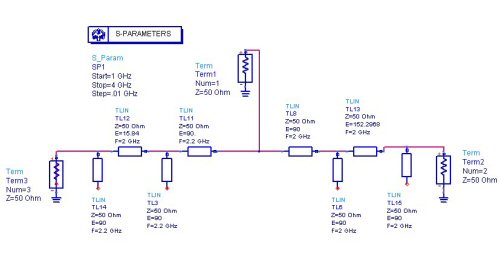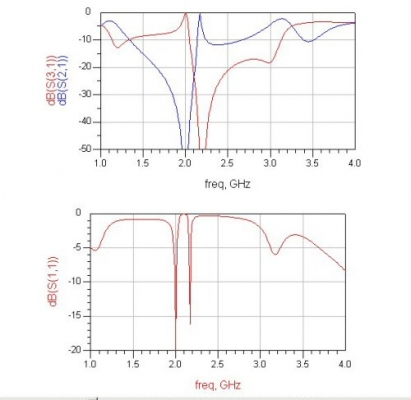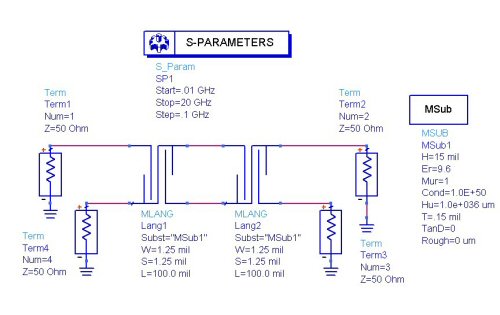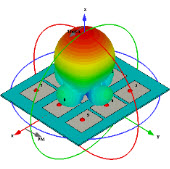Diplexers和Duplexers的区别
Duplexer 是我们翻译的双工,那么diplexer怎么翻译呢?
What's a diplexer? It's a three-port network that splits incoming signals from a common port into two paths (sometimes called "channels"), dependent on frequency. A diplexer is the simplest form of a multiplexer, which can split signals from one common port into many different paths. The incoming signals must be offset in frequency by an appreciable percentage so that filters can do their job sorting them out.
A diplexer could be used to route signals to two different receivers, based on frequency. Or it could be used to create a "matched" filter that is non-reflective outside of the intended passband. It could also be used as a bias tee, to feed your favorite active device with DC power.
Don't confuse the word diplexer with duplexer, which is the three-port network that permits a transmitter and receiver to use the same antenna, at essentially the same frequency. Duplexers are often used in radar, because the transmitter and receiver commonly share an antenna, and the returned signal doesn't vary much from the transmitted signal in frequency (just shifted slightly by the Doppler effect).
Diplexers are employed more often in communications, seldom in radar. But never say never, as Chris points out! Wideband multifunction radars can use diplexers to split received signals to different receive chains based on frequency. Examples of this appear in Modern Radar Systems by Hamish Meikle which is available on Google Books.
A diplexer is yet another example of a microwave concept with an audio analogy. In audio, a "crossover network" is used to route bass signals to your sub-woofer and woofer, and treble signals to your tweeter.
Duplexers are often confused with diplexers. A duplexer is the network that permits a transmitter and receiver to use the same antenna, at or very near the same frequency. This is used in radar, where the returned signal is going to be very close to the transmitted frequency, such is the case in a T/R module. In a diplexer, the signals have to be offset in frequency by an appreciable percentage so the filters can do their job sorting them out. Diplexers are used in communications, not radar. You dig?
Before we get too far, let's start by saying our previous statements that a duplexer and a circulator are one and the same were overly simplistic, and we stand corrected, thanks to Tony D!
There are two references on duplexers and receiver protectors that are particularly useful. The first is by Merrill Skolnik, "Introduction to Radar Systems" (see our page on recommended microwave books). The second reference is an article written by a great guy named Dick Bilotta, entitled "Receiver Protectors: A technology Update", Microwave Journal, August 1997.
Attention Ham radio enthusiasts. your definition of "duplexer" might be different from ours (and be more like a diplexer). Hams are all just a little strange, why would anyone have a hobby involving antennas?
What is a duplexer? It is a three-port network that allows the transmitter and receiver in a radar or communications system to use the same antenna. The duplexer can be as simple as a circulator in low-power applications, or it may be a radioactive gas-discharge T/R tube for megawatt radars. Important properties of a duplexer are:
Low loss between transmitter and antenna in transmit (less than 1 dB is desirable)
High isolation from transmitter to receive in transmit (as much as 80 dB for megawatt systems)
Low loss between antenna and receiver in receive (less than 1 dB is desirable)
Fast switching between the transmit and receive state, sometimes "automatically switched by the transmit signal, sometimes by command signal.
我很愚钝 看了解释还是不太明白 跟大家分享一下 请高人解释啦!还有图的,可是我不会贴图~
发帖的地方有个浏览两个字,点击浏览要传的图片就可以了

前者才是平时说的双工
后者相当于开关 接收发共用天线 接收和发射可同一频率
大概是这个意思吧
diplexer: 常说的由两个不同工作频带的滤波器构成的频率双工;
duplexer: 包括开关,环形器
Stub tuner diplexer
Below is a very simple example of a diplexer that requires that a signal at 2.0 GHz be split from a signal at 2.2 GHz, modeled on Agilent's ADS. It was a college homework problem, not an example of how someone might actually attempt to do this. One requirement was that only a pair of open stubs be used on each arm. 
Try to think of the diplexer in terms of what each arm must block. In order to block 2.0 GHz, quarterwave open stubs (E=90) are used in the right arm. In order to block 2.2 GHz, quarterwave stubs at 2.2 GHz are used in the left arm.
Refer to our section on quarterwave tricks. Here you will learn that two mismatches of equal magnitude can be made to cancel each other if placed approximately one-quarter-wave apart by rule of thumb. This diplexer application stretches our rule of thumb, you will see that the "quarter-wave spacing" between the left arm is 16 degrees, and on the right arm it is 152 degrees. hey, we said approximately, right? You always have to "tune" the length of line between the mismatches, and when the mismatches are extreme like they are here, you get results that seem far from 90 degrees.
In the response below you will see that that port 3 blocks the 2.2 GHz signal and passes the 2 GHz signal, and port 2 does the opposite. The problem with this circuit is that because the two frequencies are so close together, the bandwidth is very poor. In real life you would do this with a pair of higher-order bandpass filters, maybe lumped element, but more likely coupled line, if you have the room.

Lange coupler bias tee
You can use a pair of Lange couplers, cascaded back-to-back, to make a diplexer for use as a bias tee. Referring to the figure below, port 1 is the input port, port 2 is the DC port and port three is the RF port. From 6 to 18 GHz you have less than 1 dB RF loss from port 1 to 3. Note that the impedance match at port 1 is excellent, from DC to 18 GHz.
An interesting point was raised on our message board recently. If you follow the ADS symbol for a Lange (shown below), you don't see that both sets of diagonal ports are DC-connected. What's missing in the picture are the wirebonds. Look on our Lange coupler page and you'll get a better look at a real Lange at the bottom of the page (the wires are hard to see, but they're there!)


呵呵 发完了。
那天去展会,有一个三端口的 我觉得就是双工器,展出的人偏偏说是两个滤波器,一个900MHZ,一个1400MHZ,从两个端口进,一个端口出来!那不就是双工嘛~
A duplexer is the network that permits a transmitter and receiver to use the same antenna, at or very near the same frequency. This is used in radar, where the returned signal is going to be very close to the transmitted frequency, such is the case in a T/R module.
连接收发端和天线的不是应该叫做双工吗
学习学习在学习
多多看文件
多充实











